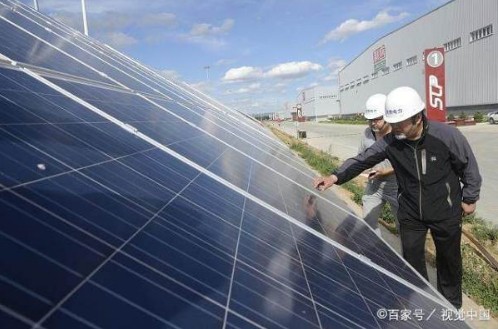How much does it cost to build a home photovoltaic power station?

It depends on three factors:
1. Cost of accessories. Namely photovoltaic inverters, solar panels, etc. The second is that different photovoltaic installation companies have their own pricing standards.
2. Installed capacity (that is, power).
3. Photovoltaic policy, that is, subsidy policy. On August 26, 2013, the National Development and Reform Commission determined that the national subsidy for distributed photovoltaic power generation was 0.42 yuan/kWh (pre-tax), with a principle period of 20 years. In addition, there are local subsidies. Different provinces and regions have different subsidies. This requires consultation with local policies. (Note: The state subsidy was implemented in accordance with the new subsidy policy of the grid-connected year for 20 consecutive years. The state subsidy will be reduced year by year in the future. It is a high probability event. In 2018, the national subsidy for grid-connected distributed photovoltaic power generation has been adjusted to 0.37 yuan/kWh.)
The construction cost of home photovoltaic power plants is compared with the installed capacity (power). It is more economical to judge how many kilowatts of photovoltaic power plants need to be installed based on the current actual power consumption. It is also possible to build a power station with a higher power so that the unused electricity can be connected to the grid and sold to the country. Generally, 3–5 kilowatts of household power stations are sufficient.
2. The income of household photovoltaic power generation includes three parts1. Subsidies to make money: national subsidies of 0.37 yuan/kWh + provincial subsidies + city and county subsidies (slightly different from place to place), whether you use it yourself or sell it, you will receive a subsidy as long as you generate electricity.
2. Save electricity bills: generate electricity for your own use without paying electricity bills, which is equivalent to making money.
3. Selling electricity to make money: sell the unused electricity to the country, and the price of electricity sold is 0.56 yuan/kWh according to the local coal-fired desulfurization unit benchmark electricity price (slightly different from place to place).
Three, there are three options for the mode of connecting household photovoltaic power generation to the grid1. All spontaneous self-use (all the electricity generated for self-use)
2. Spontaneous self-use, surplus electricity to the Internet (Priority to self-use, excess sold to the country)
3. All connected to the Internet (all the electricity generated is sold to the country)
Household photovoltaic power generation generally chooses the second type, which is spontaneous and self-use, and surplus electricity is used online. In this way, storage batteries are not needed, and electricity from the grid can be used directly at night when electricity is not available.
According to the above three different grid connection modes, the method of calculating the income is as follows:
1. Total income from all self-sponsored use:
(Local electricity price + subsidy) × total power generation
2. Total income from spontaneous and self-use surplus electricity:
Spontaneous electricity consumption × local electricity price + on-grid electricity × electricity selling price + subsidies × total power generation
3. Total income from all Internet access:
(Subsidy + electricity selling price) × total power generation
According to the current subsidized household photovoltaic power generation, how much subsidy can you get?
Let’s do a simple calculation here (subsidies are 0.32 yuan/kWh including tax, installed capacity is 5kW, investment is 32,000 yuan, average daily power generation is four hours, annual power generation is 7,300 kWh, using "self-generated and self-used, surplus electricity on the Internet mode", the proportion of self-generated and self-used 1:1, desulfurization electricity price 0.4 yuan/kWh).
Subsidy income: 0.32 (yuan/degree) x7300 (degree) = 2336 (yuan)
Electricity saving income: 3650 (kWh) x 0.4 (yuan/kWh)=1460 yuan
Income from selling electricity: 3650 (kWh) x 0.4 (yuan/kWh)=1460 yuan
The one-year income is 5256 yuan, and it is expected to pay back in 7 years.
Let’s talk about the application process of a home photovoltaic power station. The user needs to bring his ID card, household registration book and real estate certificate (or relevant certification documents) to the power supply department to apply. Note that the home photovoltaic application can only be a user, not a company, and the subsidy is issued. It will be issued to the user’s personal bank account by the local power department.
The price of photovoltaic power generation in the United States has hit a record low recently. The latest low price is 2.499 cents/kWh, which was set by the Central Arizona Project a few days ago.
But this new low price may be broken at any time.
If the latest 1001MW solar power project (including 100MW, 400,000 kWh of energy storage system) of Nevada Electric Power Company NVEnergy passes the review, Sempra Renewables 250MW Copper Mountain Solar 5 project (CopperMountainSolar5project) ), the purchase price of 2.155 cents per kilowatt-hour of electricity will become a new low. However, the project has agreed in the 25-year power purchase contract that the purchase price will increase by 2.5% every year, so the low price will not be maintained for too long.
8minutenergy's 300MW Eagle Shadow Mountain Solar Farm (EagleShadowMountainSolarFarm) is a flat price, 2.376 cents/kWh for 25 years. Therefore, in the medium and long term, the Yingyingshan Solar Power Station is likely to have a new low price in the near future, not only surpassing the Tongshan Solar No. 5 project, but also the Central Arizona project.
Suizhou simi intelligent technology development co., LTD , https://www.msmsmart.com